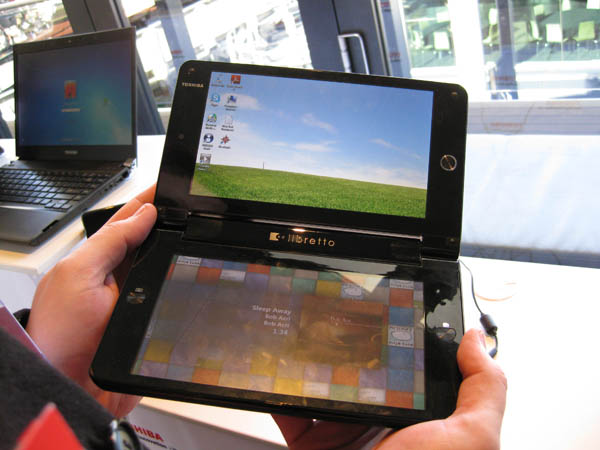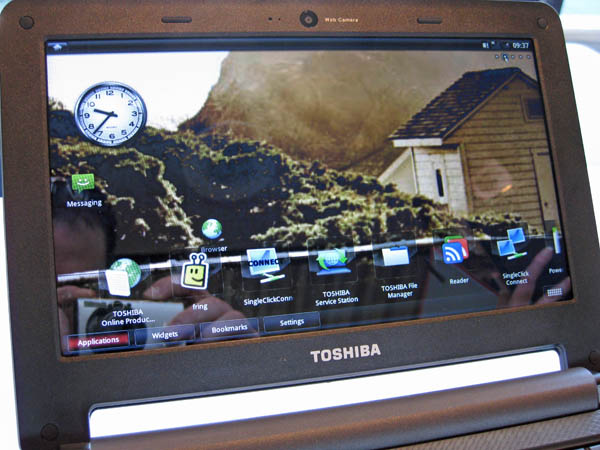 Yesterday, Toshiba unveiled a gazillion new laptops to the Australian media (plus showed a tablet prototype), but only two were really interesting – the Libretto W100 and the Android powered A100 Cloud companion. After a brief hands on, I really wish that they’d combined the two.
Yesterday, Toshiba unveiled a gazillion new laptops to the Australian media (plus showed a tablet prototype), but only two were really interesting – the Libretto W100 and the Android powered A100 Cloud companion. After a brief hands on, I really wish that they’d combined the two.
From a technical standpoint, the Libretto W100 is an awesome development. Having two touchscreens to control the device in a whole range of different ways is as close to the Microsoft Courier concept we’ve seen. There’s a dedicated button next to the bottom screen to push out a keyboard that’s easy enough to type on, but the fact you can hide it and use the screen for other functions is what makes it so exciting.
Which is why it’s such a shame that the device runs Windows 7. While the OS is a lot more touchscreen friendly than previous versions of Windows (and is perfectly suited to bigger machines), it was obvious within moments of using the Libretto that it’s still a long way from being usable on this type of device. Trying to press the tiny little icons on the Windows 7 taskbar was a frustrating experience on the seven-inch screens. The reason the iPad has been so successful is because it has big, simple to press touchscreen controls.
The solution to the problem of running Windows 7 on the Libretto was solved by the computer literally sitting next to it: the AC100, an Android powered netbook. While I was initially sceptical of using a smartphone OS on a larger computer device, it only took a few moments to realise just how inspired a decision this was. Like Android on smartphones, the AC100 had several customisable homescreens, with a collection of apps and widgets that can be used for anything from email to games.

Considering how logical Android seemed on a netbook, it would surely make the transition to a dual-touchscreen better than Windows 7. The U.S. team couldn’t think of a practical use for the device when they covered it last month, but if you consider the versatility of having dual-screen input, the power of an Intel ULV processor and the scope of applications designed for Android (and the convenience of an App Store), then the whole idea starts to sound really appealing.
Well, at least it does to me. As it stands though, $1,600 for a device with the not-so-touchscreen-friendly Windows 7 OS is something that sounds kind of cool, but would end up driving me crazy within a mater of hours…